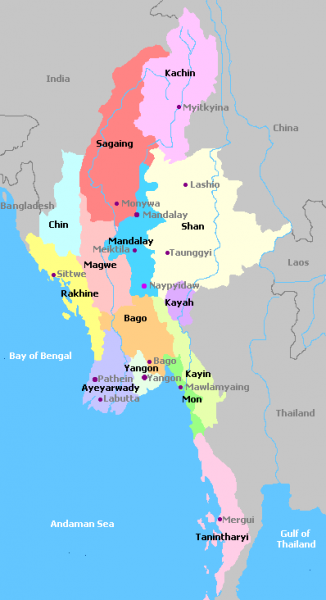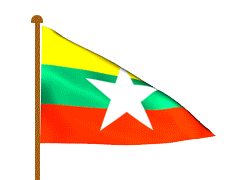A key trade hub between China and India and flowing with untapped natural resources, Myanmar is the new cornucopia of Asia. It is a global leader of rice, soy, corn and other crops, lumber-rich forests cover half its area, its vast rivers and coastlines teem with fish and even the ground beneath is full of precious stones, oil and natural gas.
With recent sweeping political and economic reforms, Myanmar is finally reaching its full economic potential. It has never been easier nor more lucrative to invest.
Overview of Myanmar

| Full name: | The Republic of the Union of Myanmar |
| Capital: | Nay Pyi Taw |
| Official language: | Myanmar |
| Population: | 51 million |
| Area: | 677,000 square kilometers (slightly larger than France) |
| Borders: | China, Thailand, Laos, Bangladesh and India |
| Head of state: | U Win Myint (President) |
| Currency: | Myanmar Kyat |
| Time: | GMT + 6:30 hours |
The Myanmar economy
| GDP: |
US$58.4 billion
|
| GDP growth rate: |
8.7% (2013 / 2014)
|
| Major exports: |
Rice, natural gas, jade, timber, pulses & beans, fish, rubber, garments
|
| Major imports |
petroleum products, machinery and parts, iron and steel materials, raw plastics, palm oil, vehicles, pharmaceuticals, cement, fertilizer
|
| Major trade partners: |
China, Thailand, Singapore, India, Malaysia, Hong Kong, Japan, Korea, Indonesia, Bangladesh, Germany
|
| Export volume | 9.08 billion USD (2012 / 2013) |
| Import volume: | 9.35 billion USD (2012 / 2013) |
Myanmar, the largest country on the Southeast Asian mainland, is situated in a geographical hub of Asia, connecting some of the world’s fastest growing economies such as China, India and Thailand and with strategic access to both the Bay of Bengal and the Andaman Sea.
Reform and transformation
After the 2011 election, Myanmar’s new democratic government taken place and began reform processes based on the following economic policies:
- Sustaining agriculture development towards industrialization and all round development
- Balanced and proportionate development among states and regions
- Inclusive growth for entire population
- Quality of statistics and statistical system
To these ends, the government has implemented extensive economic reforms, including new laws and incentives for local and foreign investors, floating the Myanmar Kyat and liberalizing some state-owned enterprises including the telecommunications sector.
Although Myanmar’s economy is still developing, foreign direct investment in Myanmar rose from US$1.4 billion to US$4.1 billion between 2012 and 2013, and its economy has a real growth rate of 8.7%—more than double that of the United States.
Working with government ministries
Specific government ministries oversee ventures in each sector. These are responsible for sector-specific permits and licensing, public oversight and keeping investors abreast of the latest sector developments. This is a list of the relevant government departments:
- Ministry of National Planning and Economic Development
- Ministry of Agriculture and Irrigation
- Ministry of Hotels and Tourism
- Ministry of Commerce
- Ministry of Electric Power
- Ministry of Environmental Conservation and Forestry
- Ministry of labor, Employment and Social Security
- Ministry of Livestock, Fisheries and Rural Development
- Ministry of Mining







